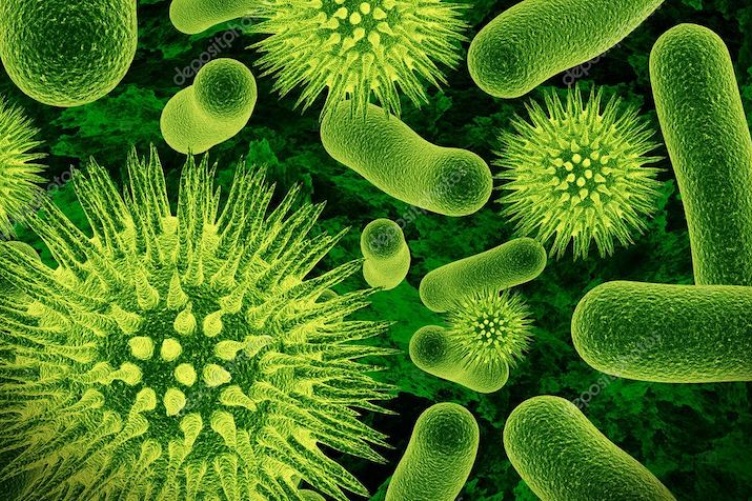
It’s not that Davida Margolin had a crystal ball or whatever one might need to predict the future when she was preparing to teach this semester. It’s all right there in the science: how a coronavirus can mutate, how it can inflect thousands and thousands of people, starting with one tiny droplet. How quickly it can become a pandemic and spread around the world.
That information has been included in Margolin’s teaching of GERMS 101 for several years now, just not as heightened as this term. She thinks of GERMS as being a course in science literacy. The syllabus describes it in part as exploring germs from varying perspectives: living organisms, human enemies or friends, and as represented in the media. That she and her students are teaching/taking the class remotely this semester provides an ironic underscoring of the subject’s gravity, one that Margolin was prepared to address.
"Germs are ubiquitous. Whether we know there are 100,000 of them on our phones or not, they’re still there. Some are harmless, some are not.”
"I had a whole PowerPoint presentation, an entire lecture about coronaviruses ready in January for the third, fourth day of class, because my gut said this was going to be a global event,” says Margolin, a lecturer in the department of molecular, cellular, and biomedical sciences. “So my students were learning about coronavirus ramifications well before it was declared an epidemic and prior to it being called COVID-19.”
A virus needs a viable host cell, Margolin instructs students. Without one, there is nowhere for it to go. And if there is nowhere to go, it can’t spread. Hence, the recommendations from the World Health Organization and the Centers for Disease Control to stay 6 feet apart, practicing handwashing multiple times a day and wear a mask. To that end, Margolin has added a lecture on the protection that masks provide.
“It’s difficult because this whole thing has become political,” she says. “I know where I stand, I stand on the side of science, and the science says masks help prevent or reduce the spread.”
To help students visualize that spread, Margolin has them watch the movie “Contagion” at the end of the semester, when they’ve been exposed to different facets of disease transmission and epidemiology. The film is about a virus that is transmitted by respiratory droplets, the rush to identify and contain its spread, and the social chaos that erupts when it becomes a pandemic.
Another exercise in past years had students using sterile swabs to swipe an area in their homes they thought would be germ-free. They then brought the swabs back to class and put them in agar plates to see if anything would grow. (Being remote has excluded the exercise this semester).
“A lot of students tested their washers or dryers, thinking of them as clean surfaces. They were surprised to see the bacteria that was there —E.coli, strep, and more,” Margolin says. “Germs are ubiquitous. Whether we know there are 100,000 of them on our phones or not, they’re still there. Some are harmless, some are not.”
And some cause diseases like rabies that will infect any animal, including humans. Smallpox, on the other hand, is only spread by humans. According to the Center for Disease Control, it is not believed that animals play a role in the spread of COVID-19 despite the assertion that it started in an animal.
“As far as I know, they’re not certain what caused COVID — a bat, a snake or some other animal from a wet market,” Margolin says. “In some wet markets, where they are slaughtering all these animals, genetic material starts to mix, resulting in hybridizing. If one of those animals has a virus it can jump to another animal, one that has no immunity.”
This is the kind of information that some students find too disturbing, she says, adding that “this is what biology is.”
“It’s not just the coronavirus. There are other diseases they should know about. Like how STDs spread, how prevalent they are and that you’re not immune,” Margolin says. “I want them to know what can happen, that 80 percent of 18 to 25-year-olds have had or will have the human papillomavirus.”
And that pregnant women shouldn’t clean a cat litter box because of a parasite that can cause toxoplasmosis. Or that you should never give honey to a baby because it could contain a bacteria that can produce toxins in their intestines.
“I try not to scare them, but I want them to know germs are all around them," Margolin says. “It’s my job to give them enough information so it jolts them into thinking about the ramifications.”
-
Written By:
Jody Record ’95 | Communications and Public Affairs | jody.record@unh.edu



















































